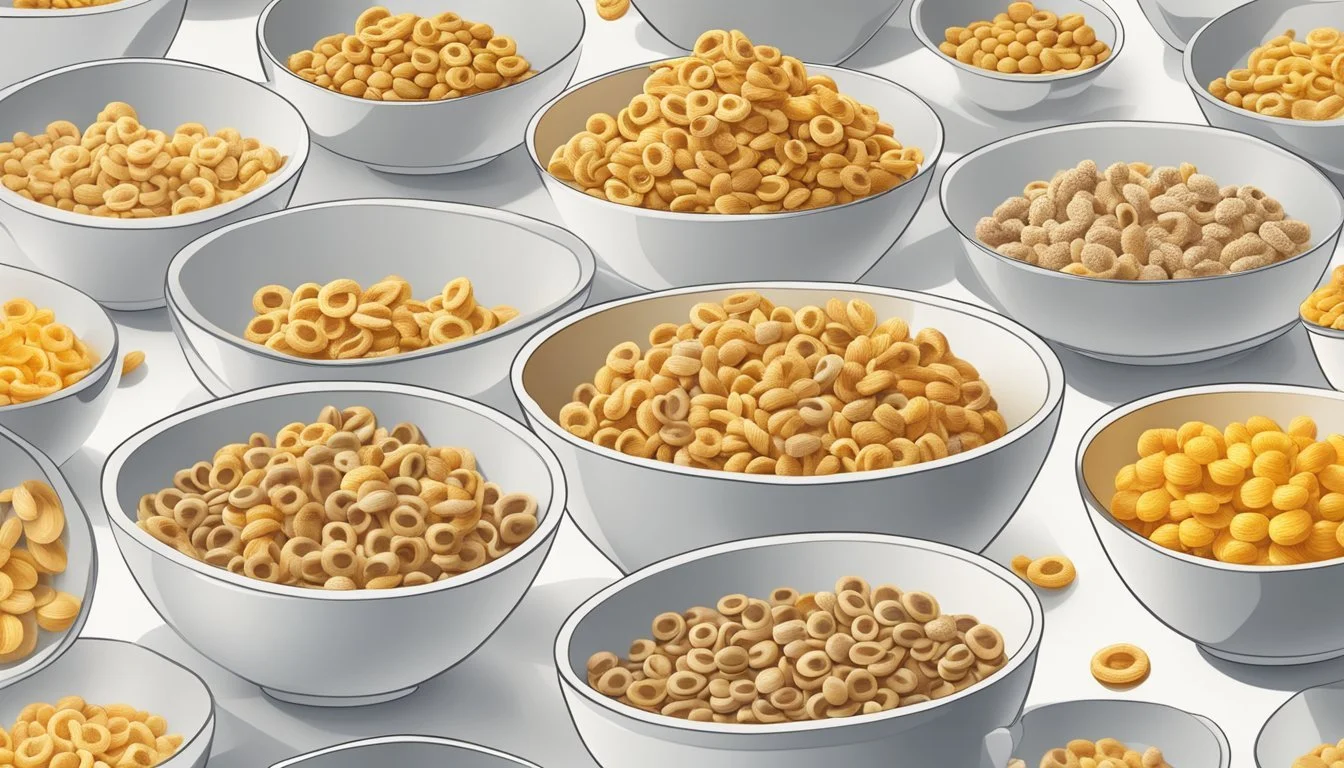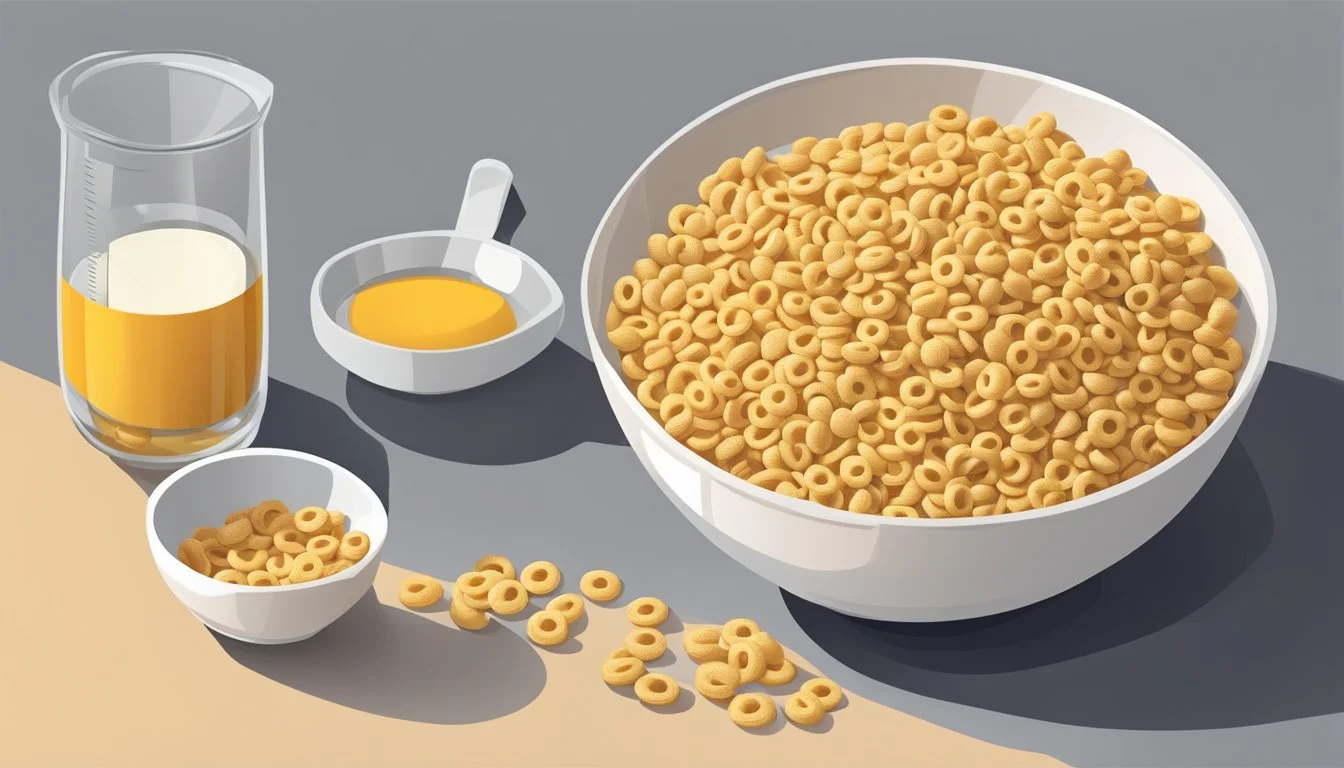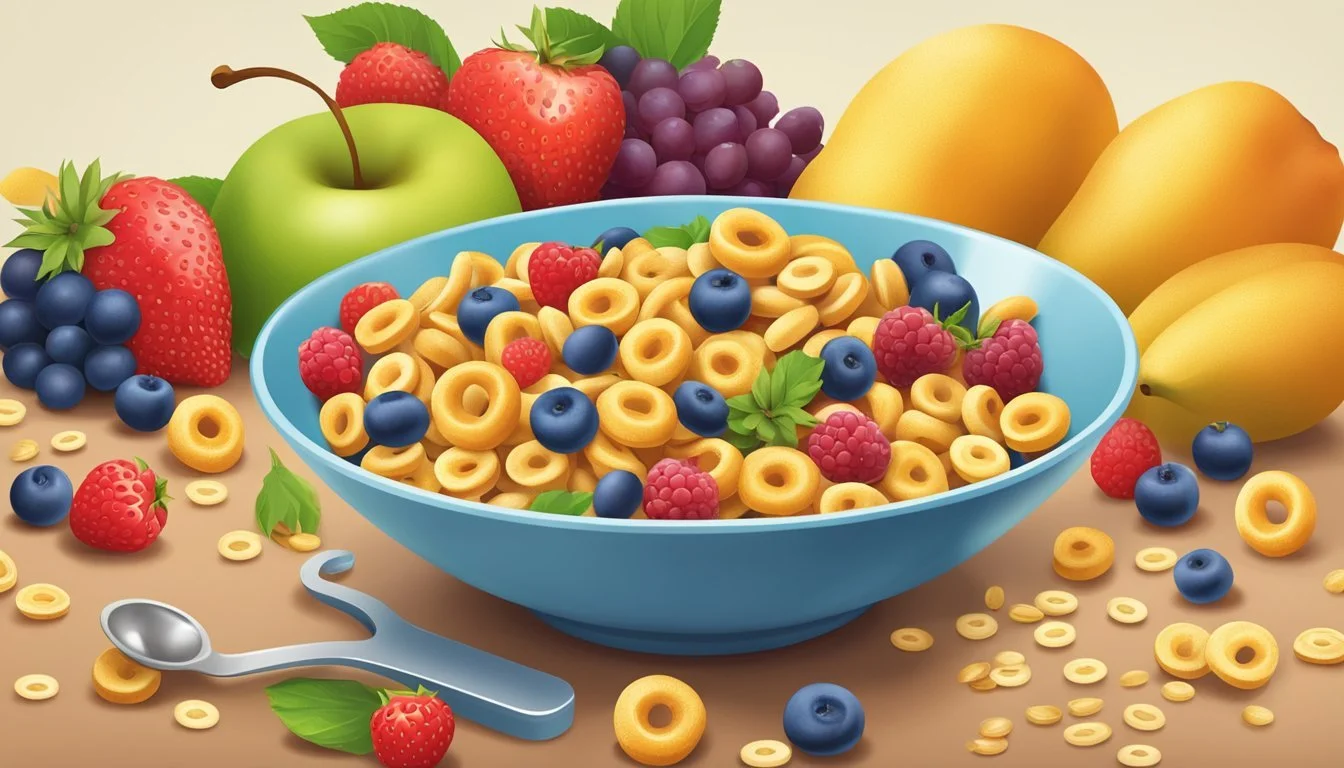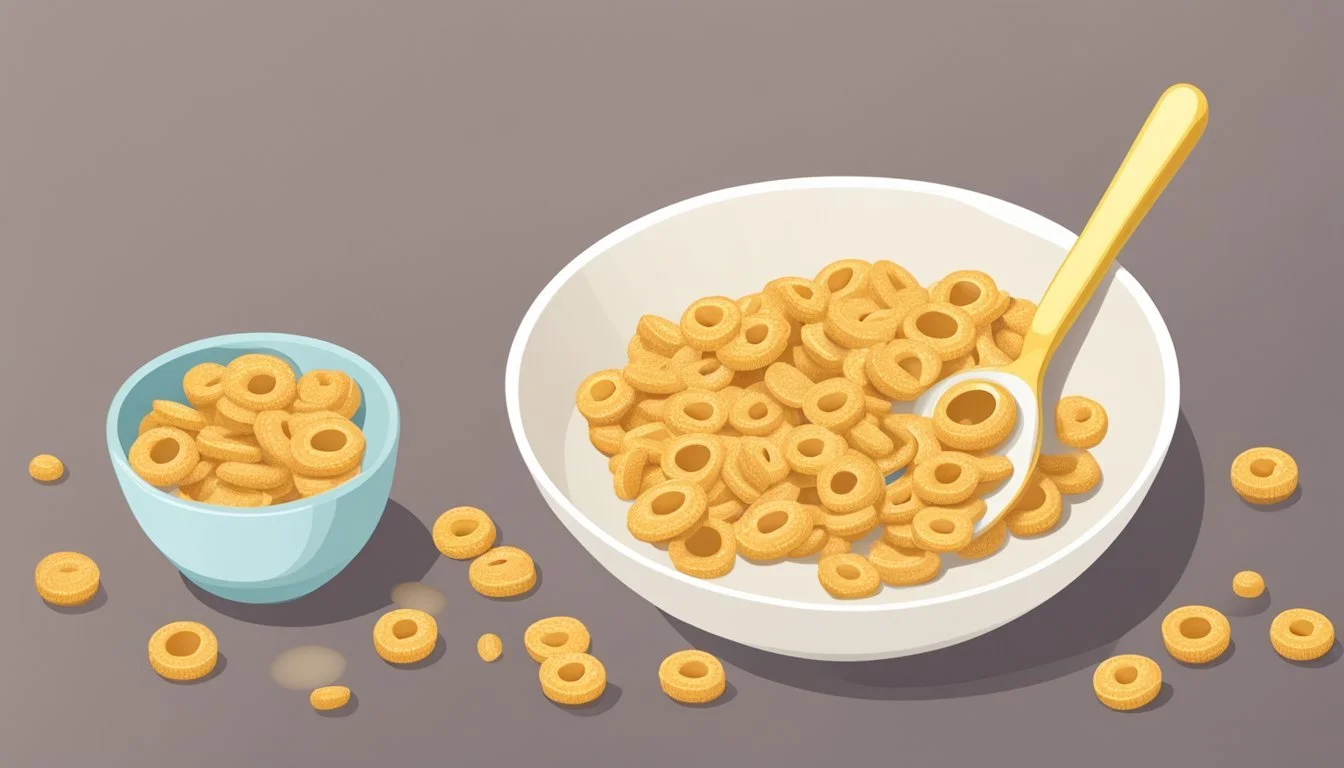How Many Servings of Cheerios Per Day is Too Much?
Understanding Healthy Limits
Cheerios have long been a staple at breakfast tables, often marketed as a heart-healthy option. The cereal is a source of soluble fiber, primarily from oats, which is associated with a potential lowering effect on cholesterol levels. A typical serving size of Original Cheerios is about 1 cup, which contains around 1 gram of soluble fiber. Considering that dietary guidelines suggest an intake of at least 5 to 10 grams of soluble fiber daily to help lower LDL or "bad" cholesterol, incorporating Cheerios into one's diet could contribute towards meeting these recommendations.
However, determining the right quantity of Cheerios for an individual involves more than just considering the fiber content. It's influenced by various factors, including overall diet, health goals, and nutritional needs. While soluble fiber is beneficial, moderation is key, as consuming anything in excess could lead to unintended health consequences. A balanced diet is one that includes a variety of nutrients from multiple food sources, and relying too much on any single food, even Cheerios, might lead to an imbalance.
It is essential to consider not just the fiber, but also the sugar, sodium, and calorie content when determining how many servings of Cheerios are too much. For most healthy adults, eating Cheerios as part of a balanced diet—without overreliance on them—is a strategy that aligns with health recommendations. Individuals with specific dietary restrictions or health concerns should tailor their cereal intake accordingly and consult with a healthcare provider or a nutritionist to determine the most appropriate serving size for their needs.
Daily Serving Recommendations
The number of servings one should consume daily varies based on several factors, which include the nutritional content of the cereal, individual dietary needs, and recommended guidelines. Here is how to determine the appropriate serving size of Cheerios.
Understanding Serving Sizes
A standard serving of Cheerios, according to the nutrition facts label, is 1.5 cups, which contains approximately 1 gram of soluble fiber. It's important to read labels carefully as serving sizes can be a guideline for managing daily food intake.
Role of Age and Body Weight
The amount of Cheerios one should eat can also be influenced by their age and body weight. Typically, a minimum of 0.36 grams of protein per pound of body weight is recommended. Therefore, a person who weighs 150 pounds would require around 55 grams of protein daily, which should be considered when determining the number of cereal servings.
American Heart Association Guidelines
The American Heart Association suggests that adults should aim for six servings of grains per day, preferring whole grains over refined ones. Cheerios, being a grain product, would contribute to this daily recommendation. However, it's essential to balance cereal intake with whole grain options and consider the overall dietary fiber intake, especially soluble fiber, which is beneficial for cholesterol management.
Nutritional Profile of Cheerios
Cheerios, a well-known cereal brand, offers a nutritionally moderate profile with a focus on whole grain content. This section outlines the specific nutritional elements found in Cheerios cereal.
Calorie and Sugar Content
A typical serving size of Cheerios, which is approximately 1 cup or 28 grams, contains about 105-110 calories. While the sugar content tends to be low, the presence of added sugars should be checked on the product's Nutrition Facts label to ensure minimal intake.
Calories: 105-110 per cup
Sugars: Low (Check label for added sugars)
Fats and Healthy Fats
Cheerios have a relatively low fat content with a small portion of these being healthy fats. Importantly, these fats contribute to roughly 16% of the calorie content.
Fat: Around 2 grams per cup
Healthy Fats: Present (Check label for specifics)
Vitamins and Minerals
Cheerios are generally fortified with vitamins and minerals such as Vitamin C, Vitamin D, Iron, and Zinc. The levels of these nutrients can vary, so it's recommended to read the nutritional label for precise amounts.
Vitamin C: Fortified
Vitamin D: Fortified
Iron: Fortified
Zinc: Fortified
Fiber and Whole Grain Content
Each serving of Cheerios offers a substantial amount of whole grains and some dietary fiber, including 1 gram of soluble fiber. It's typically recommended to consume 3 grams of soluble fiber from oats as part of a diet that can lower cholesterol.
Fiber: Around 3 grams per cup, including 1 gram of soluble fiber
Whole Grains: 34 grams per serving, contributing to the daily recommended intake
Health Benefits and Risks
Cheerios, a popular cereal made primarily from whole grain oats, is often consumed for its potential benefits to heart health and its role in a balanced diet. However, an excessive intake may carry potential health risks and counter its own benefits.
Supporting Heart Health
Cheerios contain soluble fiber, which is known to help reduce LDL cholesterol (considered the "bad" cholesterol), thus supporting heart health. For optimal results, a daily intake of at least 3 grams of soluble fiber from oats is recommended, with some experts suggesting up to 10 grams. One serving of Cheerios typically provides 1 gram of soluble fiber.
Weight Management
As part of a balanced diet, Cheerios can aid in weight management due to their low calorie count. They do not, however, contribute significantly to daily protein needs and are low in saturated fat, which could help in preventing weight gain and obesity when included in a healthy eating plan.
Glycemic Impact and Diabetes
The impact on blood sugar levels and the insulin response can be moderate when consuming Cheerios due to the whole grain composition, potentially making them a healthier choice for individuals managing diabetes. However, portion control is critical to prevent excessive blood sugar spikes.
Potential Harm from Excess
Consuming Cheerios in excess may lead to an imbalance in nutrient intake, potentially causing more harm than benefits:
Total Cholesterol: While soluble fiber helps to reduce LDL cholesterol, excessive consumption without adequate calcium, protein, and other nutrients can be counterproductive.
Heart Disease Risk: High intake without diverse nutrition can negate the heart-protecting effects and increase the risk for heart disease.
Obesity: Despite being low in calories, large quantities without balance may lead to caloric surplus and obesity.
Eating Cheerios within recommended serving sizes as part of a comprehensive diet can be a healthy choice, but overconsumption can introduce various health risks.
Incorporating Cheerios into Your Diet
When integrating Cheerios into a daily diet plan, they should be considered a single component of a diverse and balanced intake of foods. It's crucial to ensure proper portion sizes and combine them with a variety of nutrients from other food groups.
Balancing With Other Food Groups
Whole grain cereals like Cheerios can serve as a healthy part of breakfast or snacks, but they need to be complemented with other food groups. Including proteins such as eggs, legumes, nuts, seeds, or dairy products can enhance satiety and nutritional balance. Adding fruits and vegetables provides necessary vitamins, minerals, and fiber content, while fish, meat, and poultry contribute essential amino acids and healthy fats.
Portion Control and Moderation
Cheerios can be a part of a nutritionally adequate diet when consumed in appropriate portion sizes. An ideal serving size is described as about 1.5 cups of Cheerios, which equates to roughly 1 gram of soluble fiber. To avoid excessive intake, individuals should aim for no more than 3 servings per day to help maintain moderation and prevent an imbalance in the diet.
Alternative Healthy Breakfast Options
Those aiming to diversify their breakfast choices can explore other healthy breakfast options that may provide greater protein and fiber content. Options include:
Oatmeal with nuts and berries
Greek yogurt with seeds and fruit
Whole grain toast with avocado and legumes
Smoothie bowls with a mix of fruits, vegetables, and plant-based proteins
Incorporating these alternatives can offer a broader range of nutrients and support a well-rounded diet.
Considerations for Specific Groups
When determining the appropriate serving size of Cheerios for various demographics, it's important to consider individual nutritional needs and health concerns. Daily intake should reflect these considerations to maintain a balanced diet.
Children's Nutritional Needs
Children require a mix of nutrients to support growth and development. Cheerios can be a source of whole grains and some key vitamins and minerals. For example, a serving size for children may vary from 1/2 cup to 1 cup, depending on their age and appetite. It should be complemented with other foods high in calcium and protein such as milk, yogurt, or cheese to optimize their nutrition.
Dietary Concerns for Seniors
Seniors may need a diet lower in calories but rich in fiber to maintain digestive health and manage cholesterol levels. A daily serving of Cheerios, which provides 1 gram of soluble fiber per 1.5 cups, can contribute to their fiber intake. However, seniors should monitor portion sizes carefully, as too much cereal can lead to an excessive calorie intake, and should ensure a diet rich in nutrients like calcium and vitamin D for bone health.
Athletes and Active Individuals
For athletes and individuals with high levels of physical activity, the diet should provide adequate energy and nutrients for performance and recovery. Cheerios can be part of a balanced diet including carbohydrates for energy, and protein for muscle repair. They might require larger servings of Cheerios, up to 2 cups based on their increased activity level. Nonetheless, it's crucial to accompany the cereal with other nutrient-dense foods to meet their overall dietary needs.
General Mills and Product Information
General Mills Cheerios is a popular breakfast cereal that is known for its heart-healthy qualities and is produced with a focus on wholesome ingredients. This section delves into the history, production, and labeling of Cheerios, providing consumers with clear insights into the product.
History of Cheerios
Cheerios was first introduced in 1941 by General Mills under the name CheeriOats. This cereal has since become a staple in American households. It gained popularity due to its simple yet nutritious formulation primarily made from whole grain oats. Over time, Cheerios has expanded its range to include various flavors and formulations, though always keeping health as a central focus.
Processing and Production
General Mills prides itself on using whole grains, such as whole grain oats in Cheerios. The oats undergo a multi-step process where they are cleaned, cooked, and then formed into the iconic O shape. Ingredients such as oatmeal, some rice, and soy may be included. While the original Cheerios is low in sugars and fat, other variations might include additional sugars or flavors. The company is transparent about using only necessary preservatives to maintain the shelf life and integrity of the cereal.
Labelling and Marketing
The labeling on Cheerios boxes is informative and in compliance with FDA regulations, ensuring consumers are well-informed about what they are eating. Each box provides Nutrition Facts that typically highlight the cereal as low-fat, with Cheerios containing insignificant amounts of vegetable oil. Labels also delineate the sugar content and its percentage of the Daily Value. The marketing emphasizes the product's heart-healthy benefits, derived from ingredients like whole grains, which can help reduce cholesterol.







